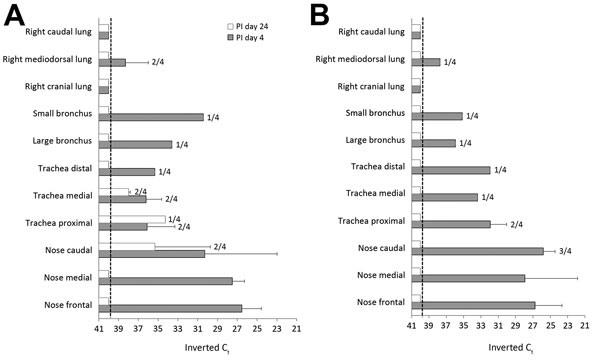Volume 23, Number 2—February 2017
Research
Livestock Susceptibility to Infection with Middle East Respiratory Syndrome Coronavirus
Figure 2

Figure 2. MERS-CoV viral RNA in respiratory tissues of llamas (A) and pigs (B). Viral RNA was determined in tissue homogenates at postinoculation days 4 and 24. Error bars indicate SDs when results were positive in >1 animal. Dashed lines depict the detection limit of the assays (Ct ≤40). Ct, cycle threshold; MERS-CoV, Middle East respiratory syndrome coronavirus; PI, postinoculation.
1These authors contributed equally to this article.
Page created: January 17, 2017
Page updated: January 17, 2017
Page reviewed: January 17, 2017
The conclusions, findings, and opinions expressed by authors contributing to this journal do not necessarily reflect the official position of the U.S. Department of Health and Human Services, the Public Health Service, the Centers for Disease Control and Prevention, or the authors' affiliated institutions. Use of trade names is for identification only and does not imply endorsement by any of the groups named above.